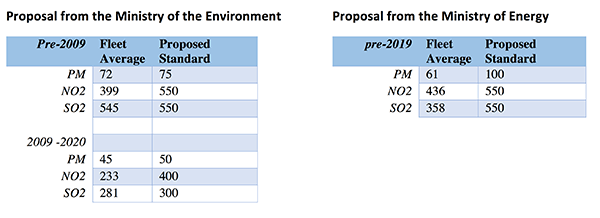
As recently as late 2017, there was reason to be concerned that Southeast Asia was a frontier for coal plant expansion. This was driven, in large part, by Indonesia’s plans to add over 35 gigawatts (GW) of new coal capacity, more than 2.5 times the amount currently needed. Those plans may have since stalled, with the Energy and Mineral Resources Minister’s freeze on new Power Purchase Agreements in Indonesia’s largest consumption area, the Java/Bali electricity grid, which serves 100 million people, two-thirds of the country’s population.
This respite is critical to the health of those living in Jakarta, the nation’s capital, and in surrounding areas. The plans to build four new coal plants around Jakarta would have added to the eight plants already encircling the city.
Indonesians are alarmed about air pollution and the ensuing health impacts. Greenpeace Indonesia projects that the proposed coal plants in Jakarta would cause over 10,000 premature deaths. With elections in early 2019, air pollution looms as a critical political issue.
Public concern is one of the reasons why Indonesia’s Ministry of Environment (MOE) announced late last year that it would revise ambient air quality standards and enact new standards for coal-fired power plants. However, pushback from utilities and the coal industry has been swift, with familiar claims of high pollution abatement costs that have stalled policy progress on clean air and energy.
The emissions abatement measures outlined in government drafts set limits far above the 250 mg/m3 standards required to ensure effective controls for both sulfur dioxide (SO2) and nitrogen oxide (NOx), and far above the levels that modern pollution controls can achieve. The proposed emission levels of 30-50 mg/m3 for particulate matter are also higher than the concentrations that new and existing units typically achieve.
Indonesia’s Proposed Emission Standards by Age of Plant

Industry claims that standards to protect public health are prohibitively expensive have been debunked by Indonesian NGOs and former US EPA air quality experts, who estimated that for approximately $2.70 per year per citizen, all of the existing coal-fired plants serving the Java/Bali grid, and its 100 million residents, could be equipped with modern air pollution controls.[footnote tooltip=”Averaged over the financing period for these controls and assuming that the cost of these improvements is shared proportionally between residential, commercial and industrial users.”][/footnote] That translates to about a penny a day per resident to slash over 90 percent of the emissions from existing plants.
That translates to about a penny a day per resident to slash over 90 percent of the emissions from existing plants.
For Java, which has approximately 21,000 megawatts (MW) of existing coal-fired generation, 6,500 MW under construction, and 5,000 MW under procurement, efforts to develop stricter standards are critical to public health. Currently, less than 25 percent of this fleet is equipped with the highest quality pollution control equipment for SO2, and there are no known plants with the best pollution controls for NOx. This condition is intensified because the coal-fired fleet is quite new and unlikely to retire anytime soon.
Capacity (MW) vs. Commercial Operation Date of Java/Bali Grid

According to MOE, the proposed standards would affect a minimal reduction for only 25 percent of the fleet. Indeed, the proposed standards are set at levels below the average performance of the existing fleet.
Proposed Emissions Standards

For several categories of plants, the worst performers meet the proposed standard for SO2, without any new controls; for others, it appears that compliance with SO2 limits is met by using the same lower sulfur coal as those that do comply. It’s safe to say that these proposed lax standards neither protect societal welfare, nor do they reflect what Indonesians want from elected officials.
Another key factor to cleaning up the air and electricity in Indonesia is the reserve margin of the Java/Bali grid. It produces 40 to 50 percent more electricity than is consumed, an enormous waste of money. The reserve margin of the East coast of the US, by comparison, is 10 to 15 percent.
With that unnecessarily high reserve, Indonesia pays in excess of $100 million per year to cover the costs of “take or pay” contracts with privately owned plants, in addition to the interest on billions of dollars of capital costs for generating unused capacity. This excess capacity, estimated to be about 10,000 MW, translates to hundreds of millions of dollars a year that Javanese pay for surplus.
With government financial resources in short supply, the incoming administration can make power sector investment decisions that protect the public and reduce health-related costs. Protecting people from air pollution for about a penny a day and slashing costly energy waste is bargain no politician should pass over.

